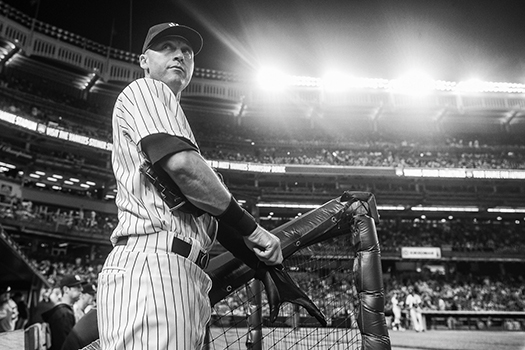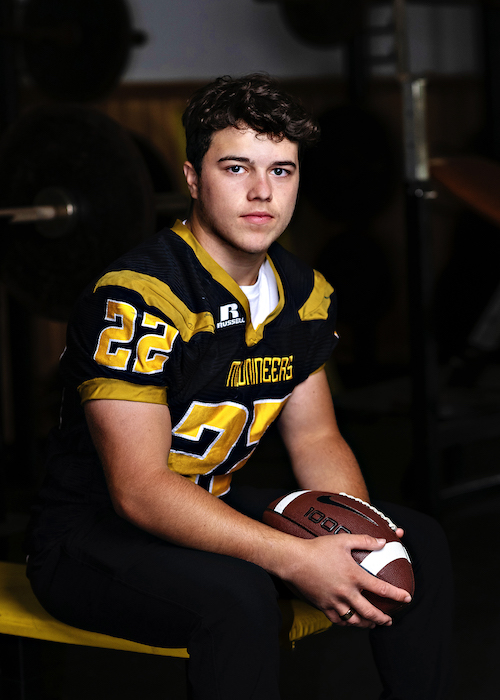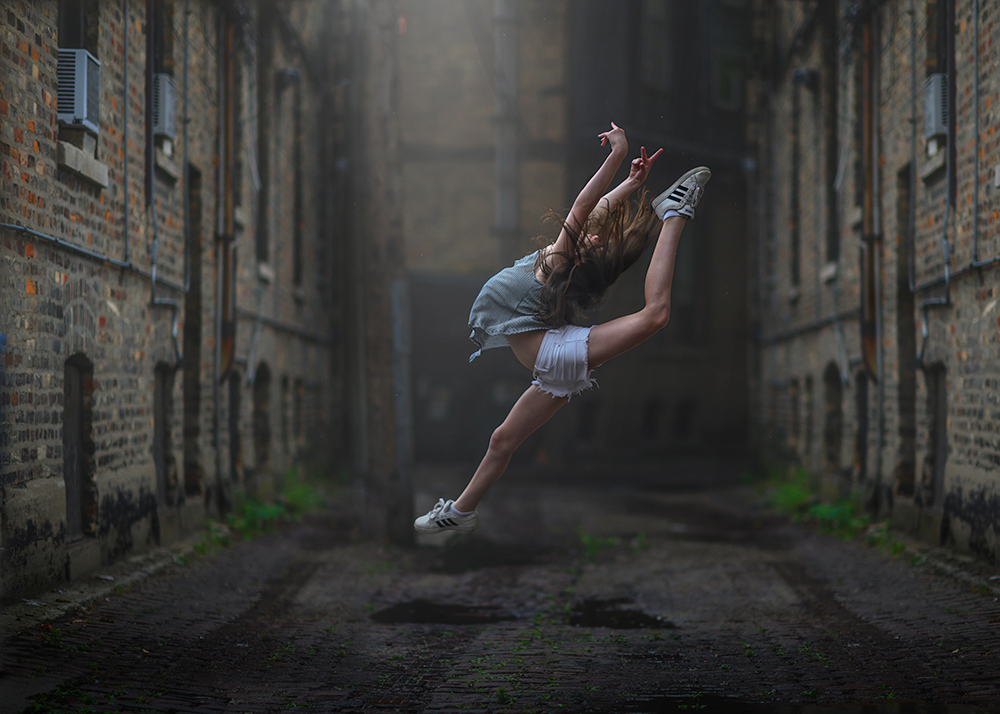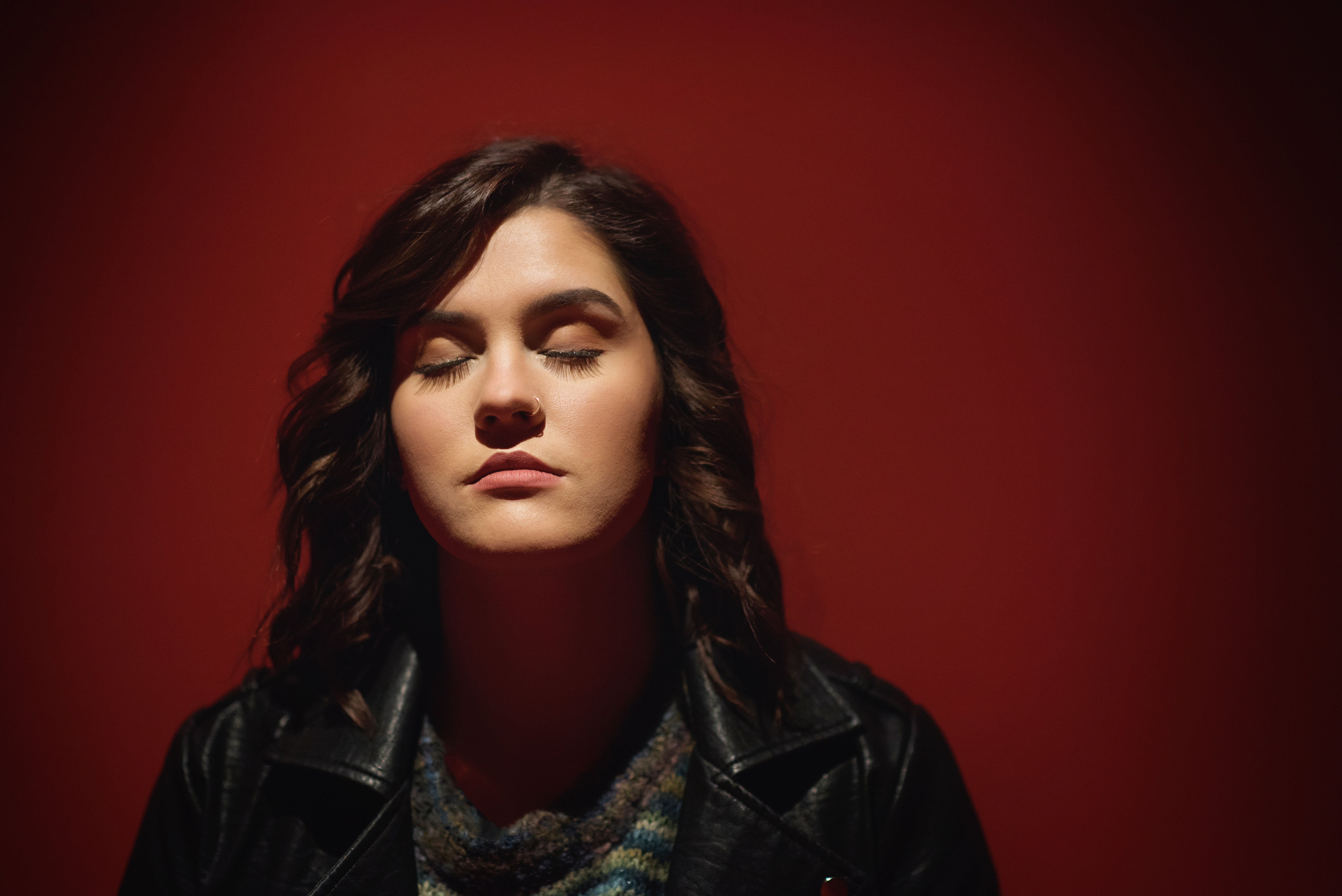High School Seniors + Sports
Shooting All Sports: Pointers From the Pros
October 4, 2016

Photo © Deanne Fitzmaurice
Favorite sport to shoot: Anything behind-the-scenes that reveals another aspect of the game or athlete.
Preferred piece of gear: Nikon D5. The focusing system is fast and precise and I have the option to take the ISO extremely high with minimal loss of image quality.
Proudest photo moment: Having my photo of Jabari Parker [as a high school basketball recruit] on the cover of Sports Illustrated.
Try to build compositions from the background, forward. I position myself in front of a clean or storytelling background, then let the action move into the composition. The background is just as important as the action in the foreground.
Look for the light. I like to move away from the pack of photographers and try to find something unique or a different angle. Look around the edges of an event, and follow the light, determining your position by the direction of it.
Be memorable to an editor. They see a lot of great photography, so you want your work to stand out and be remembered. I do a lot of behind-the-scenes work with athletes so editors contact me for those type of photography assignments.

Photo © Andrew Richardson
Favorite sport to shoot: UFC or basketball
Preferred piece of gear: Sigma 120-300mm f/2.8 Sport lens. I have shot entire NBA games with just that lens.
Proudest photo moment: Seeing several of my photos run full-page in one of Sports Illustrated’s football preview issues.
Act professional. The difference between you getting referred for a job by another shooter, and getting all but blacklisted, could very well be that one time you ran cheering onto the field at an NFL game before the game had even ended (true story, I’ve seen someone do it). It doesn’t matter what your age is, your equipment, or your experience; if you’re credentialed to cover a game, no matter what the level, you are there as a professional. Behave like one. Identify other shooters who seem to have it figured out and emulate them. You can learn a whole lot just by watching.
Don’t stress about getting “the shot.” In a lot of newcomers’ minds, “the shot” is usually some moment of peak action. They’re picturing a perfectly timed dunk, or a running back breaking a tackle, or the ball right as it leaves the bat for a home run. All of those shots are good and important and you should try to take them, but the real photos that people remember are the ones that tell a story. If you’re on an NFL sideline with 100 other photographers, it’s almost a certainty that a good number of you are going to get slightly different angles of the same action moments, but only a few of those guys are going to take photos that tell a story that sticks in the viewers’ minds. The earlier you can start training yourself to be a storyteller and not just a button pusher, the better.
Learn to deal with bad light. Don’t sacrifice your shutter speed to try and keep your ISO low. I would rather see a noisy photo that froze the action, than a clean one that’s blurry because you tried to shoot football at 1/500. Don’t just learn to use your equipment—learn to pay attention to light, shadows and white balance so you develop an instinctive understanding of how light works and can recognize potential issues before you start shooting.
Your gear matters. You don’t need the latest and greatest, but you do need fast glass and a body with capable autofocus. Gear is never going to make you a better photographer, and great photographers can take great photos with crappy gear, but there’s a reason that chefs, artists, builders, etc. all use specific (and usually expensive) tools; because the tools matter.
It’s never too early to start building good workflow habits. If you don’t start developing some of the basics now, you will struggle to do it later. Even if you’re shooting for a school paper and your editor just wants a couple of JPEGs Dropboxed over and that’s it, hold yourself to a higher standard. Learn how to write good captions, even if it’s not required. Develop a workflow that is constant and repeatable. Name your files and keep everything sorted in a logical manner. (Seriously, I can’t overstate this. Start doing this now. Today.)

Photo © Kevin Jairaj/USA Today Sports Images
Favorite sport to shoot: Football
Preferred piece of gear: Canon 1D bodies. They’re amazing for fast autofocus and very dark situations.
Proudest photo moment: Covering the Sochi Olympics for USA Today.
Have a solid portfolio of sports action and storytelling images to show your potential employer. If you don’t have any college or pro-level images to show, be honest and let that fact be known when you submit a portfolio. A good photo editor knows that a good action shot and storytelling image can be made from any level of sports, whether it’s Pee Wee Football or a simple pick-up game of basketball at a rec center!
Shoot with straight horizon lines. There is nothing worse to photo editors than a crooked sports photo.
Get low when you shoot. By getting low, you allow the athletes to seem larger than life, and it helps clean up some ugly backgrounds.

Photo © Dustin Snipes
Favorite sport to shoot: Sumo wrestling
Preferred piece of gear: Broncolor Para 88. It’s one light shaper that has a ton of different tricks.
Proudest photo moment: Making NBA player Anthony Davis look like he was dunking the sun.
Stand where another photographer isn’t and create a shot—don’t just wait for it to happen. When I first started shooting sports, I would shoot high school and college games. There is a lot more freedom to try out creative angles and techniques, which helped me get noticed by magazine editors and creatives. You don’t need a 400mm lens or a 12 fps camera. When I won my first sports photographer of the year award, I had two lenses: a 70-200mm and a 16-35mm.
Submit your work to contests. Entering photography contests has lead to positive feedback and photo assignments. Even if you don’t win the contest, your submissions are usually still judged by people who work in the industry, and they may think you are perfect for an upcoming project.

Photo © Fab Fernandez for ESPN
Favorite sport to shoot: Water polo
Preferred piece of gear: Canon 1DX. At 14 frames per second, it’s hard to miss the action.
Proudest photo moment: Winning an award from PDN’s for “The Shot” and getting hired by ESPN the Magazine—they are the pinnacle of the sports editorial world for me.
Whatever the game is, whatever the sport is, just shoot as much as you can. Your passion will come through and over time there will be certain sports you just love to shoot, but you will learn that shooting race cars, for example is a lot different than shooting a tennis match. Start early and get your feet wet as much as you can so that you are ready and you know what to do when the call comes in from ESPN or whatever client. Shooting a variety of sports will show potential clients that you can handle any sport under any condition. With every shoot brings an opportunity to build your portfolio.
Find your photographic voice. This is going to come with experience, but as you build your portfolio you should see your passion and vision unfolding. You want people to see your images and say, ”Oh yeah, Fab Fernandez shot that.” The more you shoot, the more your vision and voice will emerge, regardless of the sport at hand, so try and develop your style early on, or at least be aware of it.
Brand your business consistently. An important part of developing your photographic style is in how you brand yourself. Your logo is a very important aspect of your brand. Carry your branding through everything you do, from your website to your promotions to everything the external world sees. If you are still in school, I am sure you have friends who are studying graphic design; trade your services for theirs.

Photo © Rob Tringali
Favorite sport to shoot: Baseball
Preferred piece of gear: Prime lenses (Canon 24mm f/1.4, 50mm f/1.2 and 85mm f/1.2). They give great separation between subject and background, which is great for big stadiums.
Proudest photo moment: Getting my first cover of Sports Illustrated.
Shoot for the story. It’s nice to get a great action shot that wows people, but telling a great story visually is the real challenge. Go out and do some research, ask questions. It could be anything. There are many of them out there. Finding a story and being able to execute it visually will be the number one thing you can do get an editors attention. Let’s face it, camera equipment is pretty great these days and lots of people can get lucky getting a great action photo, but delivering a visual story is an art form that will never go away and something that will always be in demand.
Challenge yourself with different shooting scenarios. We all wish we have optimum conditions to take our photos, but I look at it this way: If I could make great images in a dark high school gym, just think what I could do if I had better conditions to work under. Taking it as a personal challenge is something I use to motivate myself. Don’t fall into the trap a lot of photographers get into, which is complaining all the time about something or everything. There will always be that one photographer who makes magic happen regardless of the situation while others look in amazement. Aspire to be that photographer, and leave the complaining to the others.
Network, network, network. It’s a continuous process that never ends. Don’t get discouraged that someone didn’t answer your email; photo editors get bombarded by hundreds of emails a day. If you have something cool, most likely they will remember you. Create fresh stuff all the time, and get it out there by all means. I don’t think there is a magic answer, but if you really have a great eye and have that special gift, you will get noticed one day. We live in a very challenging world as a photographer, but I still truly feel that the best always survive.

Photo © Alexis Cuarezma
Favorite sport to shoot: Boxing
Preferred piece of gear: Canon’s 24-105mm f/4L IS lens. When having only one or two minutes with someone, it gives me a wide range of focal lengths to shoot from.
Proudest photo moment: Shooting five covers for Sports Illustrated for the U.S. Women’s Soccer World Cup issues in 2015, and a personal video project completed in June with NBA player Jaylen Brown.
Shoot for the jobs you want, not the ones you’re getting. I started out shooting Little League baseball, but I would look at all the images in Sports Illustrated and do my best to make images like that with the gear I had. I started shooting with Canon’s original 6mp Rebel and two cheap zoom kit lenses. When it came to doing portraits, I never treated it like a regular school team or individual session. I would treat as if it was an ad campaign for a major brand. That way, I would have a solid piece I could use to send their way to market myself.
Wow editors with your website. Have a good, clean site that loads quickly, has your location and contact information, and a cohesive and well-organized portfolio. One of the biggest mistakes I made when I first started out was having my wedding work and sports work on the same site. Those are two completely different markets. Have a focused portfolio that shows you’re an expert with that genre. And make sure to have your email and phone number listed with where you are based; don’t make people fill out those online forms to contact you. If editors can’t quickly find a way to get a hold of you, they’ll move on to the next person. Make it as easy as possible.

Photo © Dan Root/drootphoto.com
Favorite sport to shoot: No sport in particular—my favorite subjects to photograph are people who are passionate about the sport they participate in.
Preferred piece of gear: Canon 50mm f/1.2 lens. I really like to get as close to the athletes and action as possible with a very short depth field.
Proudest photo moment: Identifying my style, and therefore becoming very confident in the narratives that I was capturing.
Invest in your self-growth. With respect to marketing and branding of yourself, many young photographers, and I did this too, make the mistake of investing too much into the design of the branding, as in logos and websites, instead of investing their time and money into going out and creating a body of work that reflects their own personal style. Avoid going to market with an undefined and poorly curated body of work. Invest first in finding out what you love to shoot within the broad category of sports photography.
Do as many personal projects as you can, as these projects will help you define your personal style. Art buyers love to see a photographer’s personal projects. Just make sure you curate your body of work so that your style is consistent over many applications. Also, less is more. Show only your best work that is relevant to your style.

Photo © Peter Lockley
Favorite sport to shoot: Combat sports (boxing, wrestling, mixed martial arts)
Preferred piece of gear: Canon 400mm f/2.8 lens. It’s extremely versatile, can be used for action, details, in low light, and the perspective is drastically different.
Proudest photo moment: Getting a two-page spread in ESPN the Magazine for the first time, as an intern at The Gazette in Colorado Springs. I shot the Class A state football championship between Akron and Limon, two of the smallest schools in the state. I didn’t have a credential. I just walked up to the side of the field. Akron had won 38 games in a row, including the last two state championships. Heavy snow started falling around halftime, and when Limon pulled off the upset, their players celebrated by making snow angels on the field. I was able to walk right onto the field and get a clean shot. There were no other photographers crowding the moment or disrupting the image.
Take advantage of the level of access and emotion you have with school sports to make some great photos. They’re harder to make at the pro level. School sports are played with passion, out of love for the game, while professionals are playing because they are getting paid. And while professional athletes enjoy what they do and show great emotion, sometimes that love of the game is more apparent in school sports. Build relationships with the people who run the venues, the coaches, the players, and anyone who can help you make great images. If you make great images from school sports, you will get noticed by the people who are likely to hire you to shoot in the pro ranks.
See the original article in Rf’s September digital edition.
Creative Live Video Tutorial—Sports Photography: Making the Shot




